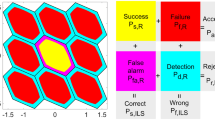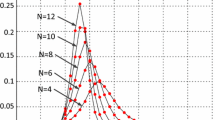Abstract
Global Navigation Satellite Systems (GNSS) have been widely used for many precise positioning and navigation applications. In satellite-based precise positioning, as carrier phase measurements are used, the determination of correct integer carrier phase ambiguities is a key issue in obtaining accurate and reliable positioning results. Therefore much effort has been investigated in developing a robust quality control procedure which can effectively validate the ambiguity resolution results. Such a quality control procedure has been traditionally based on the so-called F-ratio and R-ratio tests. A major shortcoming of these two ratio tests is that their probability distributions, which are normally considered to be Fisher distributed, are still unknown, which precludes the possibility to evaluate the confidence level for the ambiguity validation test. To overcome such a shortcoming, an alternative ambiguity validation test based on the so-called W-ratio has been proposed, which allows for a more rigorous quality control procedure under the assumption that the fixed integer ambiguities are constant. The W-ratio test has been widely used by many researchers. Like any other quality control procedures, there are assumptions to be made, for example, it is assumed that both functional and stochastic models are correct, in the W-ratio test. This paper presents a sensitivity analysis for the new ambiguity validation test based on the W-ratio as well as the other two ratio tests. The analysis will cover the sensitivities of the ratio tests to undetected gross errors (outliers), stochastic models, and geometry strengths relating to a variety of satellite constellations, such as GPS, GPS/GLONASS integration with real data sets. While the performances of different ratio tests are analyzed in terms of the so-called ambiguity “correct” rates based on the ground truth integer ambiguity values.
Access this chapter
Tax calculation will be finalised at checkout
Purchases are for personal use only
Similar content being viewed by others
References
Cross PA (1983) Advanced least squares applied to position fixing. Working Paper No. 6, Department of Surveying, Polytechnic of East London, 205 pp
Euler HJ, Schaffrin B (1991) On a measure for the discernability between different ambiguity solutions in the static-kinematic GPS mode. In: IAG symposia no 107, kinematic systems in geodesy, surveying, and remote sensing. Springer, Berlin, pp 285–295
Frei E, Beutler G (1990) Rapid static positioning based on the fast ambiguity resolution approach FARA: theory and first results. Manuser Geod 15(4):325–356
Li T, Wang J (2012) Some remarks on GNSS integer ambiguity resolution methods. Surv Rev 44(326):320–328
Teunissen PJG (1993) A new method for fast carrier phase ambiguity estimation. In: IEEE position, location and navigation symposium (PLANS). Las Vegas, 11–15 April, pp 562–573
Teunissen PJG (1995) The least-squares ambiguity decorrelation adjustment: a method for fast GPS integer ambiguity estimation. J Geodesy 70(1–2):65–82
Teunissen PJG (2003) Integer aperture GNSS ambiguity resolution. Artif Satellites 38(3):79–88
Teunissen PJG (2009) The GNSS ambiguity ratio-test revisited: a better way of using it. Surv Rev 41(312):138–151
Teunissen PJG, Odijk D (1997) Ambiguity dilution of precision: definition, properties and application. In: Proceedings of the institute of navigation (ION 1997). Kansas City, pp 891–899
Wang J (2000) Stochastic modelling for RTK GPS/GLONASS positioning. J US Inst Navigat 46(4):297–305
Wang J, Stewart MP, Tsakiri M (1998) A discrimination test procedure for ambiguity resolution on-the-fly. J Geophys Res 72:644–653
Wang J, Stewart MP, Tsakiri M (2000) A comparative study of the integer ambiguity validation procedures. Earth Planets Space 52(10):813–817
Author information
Authors and Affiliations
Corresponding author
Editor information
Editors and Affiliations
Rights and permissions
Copyright information
© 2015 Springer International Publishing Switzerland
About this paper
Cite this paper
Wang, J., Li, T. (2015). GNSS Integer Ambiguity Validation Procedures: Sensitivity Analysis. In: Kutterer, H., Seitz, F., Alkhatib, H., Schmidt, M. (eds) The 1st International Workshop on the Quality of Geodetic Observation and Monitoring Systems (QuGOMS'11). International Association of Geodesy Symposia, vol 140. Springer, Cham. https://doi.org/10.1007/978-3-319-10828-5_4
Download citation
DOI: https://doi.org/10.1007/978-3-319-10828-5_4
Published:
Publisher Name: Springer, Cham
Print ISBN: 978-3-319-10827-8
Online ISBN: 978-3-319-10828-5
eBook Packages: Earth and Environmental ScienceEarth and Environmental Science (R0)




